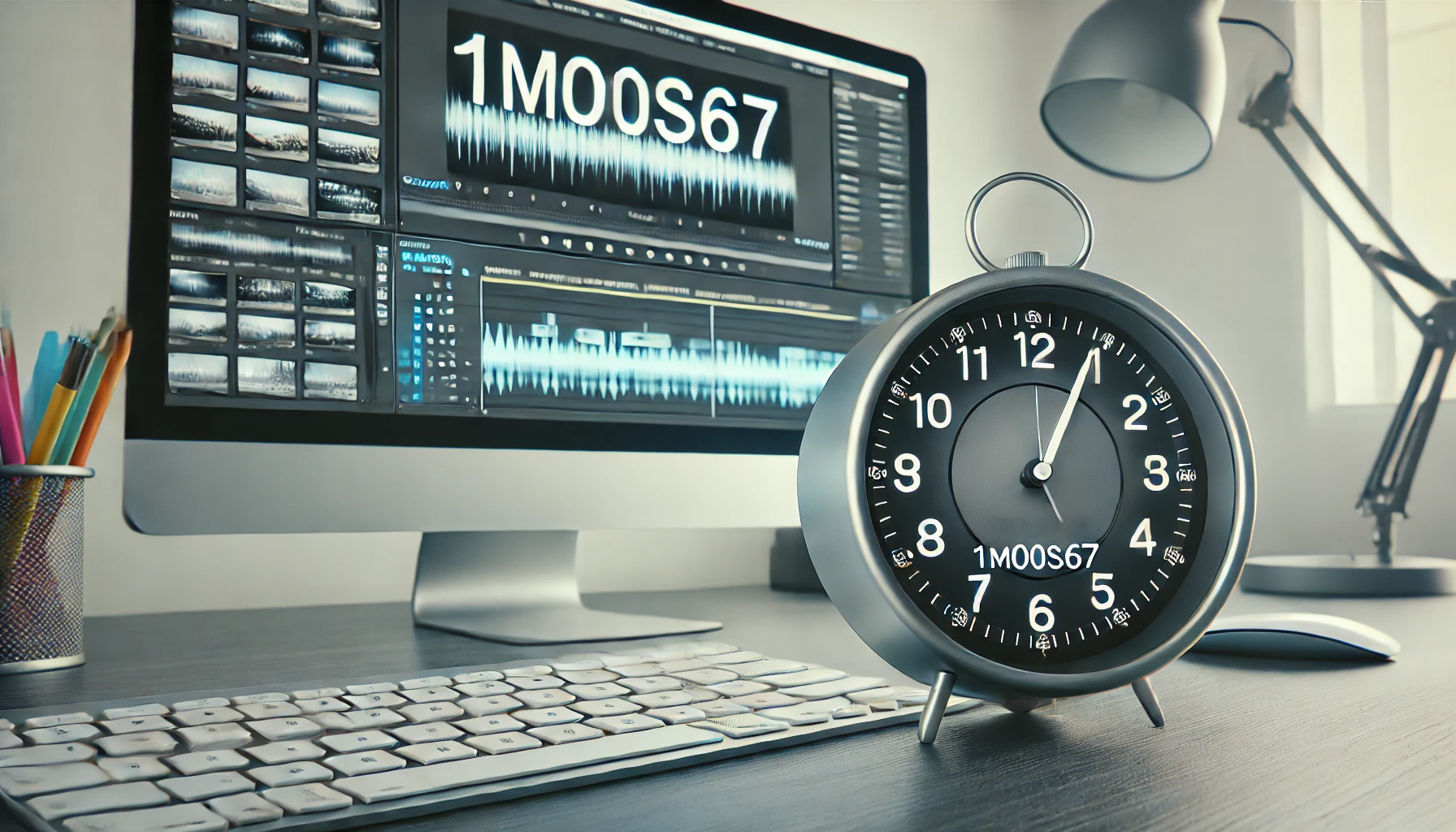Have you ever come across the term “1m00s67” and wondered what on earth it means? You’re not alone! While it might sound like the name of a secret code or a futuristic device, “1m00s67” is actually much simpler than it first appears. In this post, we’ll break down the mystery behind this term, explain its significance, and have a little fun along the way. Buckle up for a journey through the world of “1m00s67” that will leave you saying, “Oh, now I get it!”
What is “1m00s67”?
“1m00s67” might sound like a cryptic message, but once you break it down, it becomes easy to understand. Essentially, it’s a timecode, typically used in media or video content. The format is 1 minute, 0 seconds, and 67 milliseconds. Simple, right?
Imagine you’re watching a video, and you need to mark an exact point. Instead of saying “that part around one minute,” you can be precise with “1m00s67,” making sure you never miss that critical moment again!
Common Uses of “1m00s67”
“1m00s67” is most commonly found in:
- Video Editing: Editors use exact timecodes like “1m00s67” to sync audio, add effects, or trim scenes.
- Sports Broadcasting: Need to replay the exact moment of a winning goal? Timecodes like this make it easy.
- Content Creation: Whether you’re creating YouTube videos or tutorials, using precise time stamps helps in navigation and ensuring accurate content placement.
Fun Fact: Timecodes are like the GPS coordinates of videos—they get you exactly where you need to be!
Breaking Down the Term “1m00s67”
Let’s take a closer look at how “1m00s67” is structured. The breakdown is straightforward:
- 1m stands for 1 minute.
- 00s represents 0 seconds.
- 67 is the number of milliseconds (there are 1,000 milliseconds in a second, so this represents a fraction of a second).
These components combine to give a highly precise location in time, which is crucial when you’re working in environments where timing is everything—like media production or live event broadcasts.
How Does “1m00s67” Help in Practice?
Consider this: You’re editing a music video, and you want the beat to drop exactly when the lights flash. You can’t guess this timing—you need the precision of “1m00s67” to make sure everything syncs perfectly.
How to Interpret “1m00s67”?
Now that we know what “1m00s67” means, let’s see how you can actually use it.
- Watch a video or listen to audio: When you want to note a specific point, simply pause and check the timestamp.
- Find the exact moment: The timecode tells you where you are, down to the millisecond.
- Use it to edit or reference: This precision allows you to easily return to that exact moment whenever you need to make adjustments or add notes.
It’s kind of like having a superpower that lets you freeze time and return to that moment whenever you please. Pretty cool, right?
Importance of “1m00s67” in Today’s Digital Age
We live in a fast-paced digital world where accuracy is everything. In video production, live streaming, or even e-learning, being off by just a fraction of a second can ruin the experience. Enter 1m00s67, your friendly neighborhood timecode!
Here’s why it matters:
- Precision: It allows creators to pinpoint exact moments, ensuring smooth transitions and flawless sync.
- Efficiency: Timecodes make it easier to find and fix mistakes quickly, without having to scrub through hours of footage.
- Professionalism: Whether you’re editing a blockbuster movie or a TikTok video, using exact timecodes makes your work look polished and sharp.
Common Misunderstandings about “1m00s67”
Like many technical terms, “1m00s67” can sometimes be misunderstood. Let’s clear up a few misconceptions:
- Myth #1: It’s too complicated.
Actually, once you understand that it’s just a simple time marker, “1m00s67” becomes easy to grasp. - Myth #2: Only professionals use it.
Not true! Anyone working with video or audio, even beginners, can benefit from learning how to use timecodes. - Myth #3: Milliseconds aren’t important.
Wrong again! In precise fields like sports or music, even a few milliseconds can make a huge difference.
Practical Applications of “1m00s67”
Now, let’s talk about how you can actually use “1m00s67” in everyday situations:
- Content Creation: Whether you’re making YouTube videos or podcasts, you can use timecodes to synchronize transitions, music, and effects perfectly.
- Video Games: Game developers use timecodes like “1m00s67” to time in-game events and ensure smooth gameplay.
- Sports Broadcasting: Ever wondered how broadcasters instantly replay the exact moment of a touchdown? Yep, timecodes like “1m00s67” are the key!
Using timecodes allows for better coordination and professional results in all these fields.
Advantages and Limitations of “1m00s67”
Advantages:
- Accurate: You’ll always hit the mark, making your work more professional.
- Time-Saving: No more guessing or approximating time; go straight to the exact moment.
- Versatile: Can be used in various fields like video production, sports, or even e-learning.
Limitations:
- Learning Curve: It might take some practice to get used to reading and using timecodes.
- Limited Use Cases: If you’re not working in media or precise timing fields, you might not need to use timecodes as often.
How to Stay Updated on “1m00s67”
Want to be the ultimate master of timecodes? Here’s how you can stay updated on “1m00s67” and its uses:
- Follow online tutorials: Websites like YouTube offer plenty of tutorials on working with timecodes.
- Join media production communities: Places like Reddit or specialized forums are great for learning the latest tips and tricks.
- Keep practicing: The more you work with timecodes, the more natural they will become.
FAQs About “1m00s67”
- Is “1m00s67” only used in media production?
While media production is the most common area, timecodes can be used in various fields like sports, research, and data logging. - How can I find the exact timecode in a video?
Simply pause the video at the desired point, and the timecode will usually be displayed in the media player. - Are timecodes like “1m00s67” hard to use?
Not at all! Once you understand the structure, using timecodes becomes second nature.
Conclusion
By now, “1m00s67” should no longer feel like an intimidating jumble of numbers. It’s a practical, easy-to-use tool that can significantly enhance your work in video production, content creation, and beyond. Whether you’re a professional editor or just someone looking to refine your media skills, understanding and using timecodes like “1m00s67” can make a world of difference.
So, the next time someone asks you about “1m00s67,” feel free to drop some knowledge—and maybe even a joke or two!





